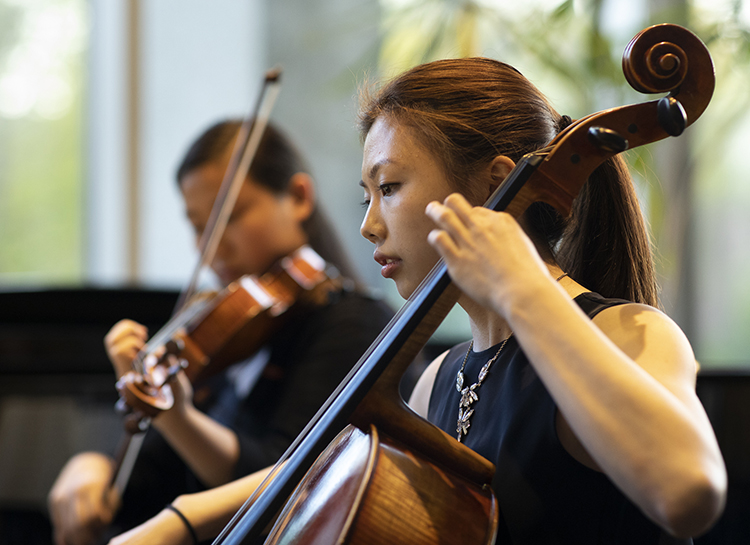The Division of Public Safety is committed to enhancing the quality of life for the campus community by integrating the best practices of public and private policing with state-of-the-art technology. A critical component of a comprehensive security plan using state-of-the-art technology is Closed Circuit Television (CCTV).
As prescribed by the University Policy “Closed Circuit Television Monitoring and Recording of Public Areas for Safety and Security Purposes” (Almanac April 29, 2008), the locations of all outside CCTV cameras monitored by Public Safety are to be published semi-annually in Almanac. The locations and descriptions of these cameras can also be found on the Division of Public Safety website: https://www.publicsafety.upenn.edu/about/security-technology/closed-circuit-television-cctv/
The following existing cameras meet those criteria:
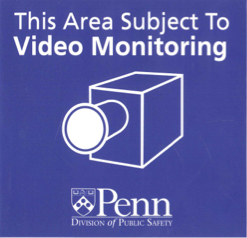
University of Pennsylvania Cameras
39th St. & Baltimore Ave. (Vet School, Hill Pavilion)
40th St. & Baltimore Ave.
41st St. & Baltimore Ave.
42nd St. & Baltimore Ave.
43rd St. & Baltimore Ave.
31st & Chestnut Sts. (Left Bank)
33rd & Chestnut Sts.
34th & Chestnut Sts.
36th & Chestnut Sts.
38th & Chestnut Sts.
40th & Chestnut Sts.
4040 Chestnut St. (front)
41st & Chestnut Sts.
43rd & Chestnut Sts.
46th & Chestnut Sts.
Steve Murray Way & Chestnut St.
38th St. & Hamilton Walk
36th St. & Locust Walk
37th St. & Locust Walk (1&2)
38th St. & Locust Walk
39th St. & Locust Walk
40th St. & Locust Walk
41st & Locust Sts.
42nd & Locust Sts.
43rd & Locust Sts.
39th & Ludlow Sts.
40th & Ludlow Sts.
34th & Market Sts.
36th & Market Sts.
38th & Market Sts.
40th & Market Sts.
40th & Pine Sts.
41st & Pine Sts.
42nd & Pine Sts.
36th & Sansom Sts. (Franklin Bldg.)
38th & Sansom Sts.
39th & Sansom Sts.
4040 Sansom St. (rear)
Steve Murray Way & Sansom Sts.
33rd St. & Smith Walk
34th & Spruce Sts.
36th & Spruce Sts.
37th & Spruce Sts.
38th & Spruce Sts.
39th & Spruce Sts.
40th & Spruce Sts.
41st & Spruce Sts.
42nd & Spruce Sts.
43rd & Spruce Sts.
31st & Walnut Sts. (Left Bank)
33rd & Walnut Sts.
34th & Walnut Sts.
36th & Walnut Sts.
37th & Walnut Sts.
38th & Walnut Sts.
39th & Walnut Sts.
40th & Walnut Sts.
41st & Walnut Sts.
43rd & Walnut Sts.
4119 Walnut St.
100 Block of S. 37th St.
Blockley Hall (bike racks 1-8)
Blockley Hall (roof)
BRB II (loading dock–exterior)
BRB II (roof–rear and front)
Caster Building (rear entrance)
Caster Building (bike racks 1&2)
Chemistry Building (bike racks 1-4)
CineMark
College Green (1&2)
College Green (lower)
College Hall (exterior basement)
CRB (roof)
CRB-Stemmler Hall (main entrance)
CRB-Stemmler Bridge (interior)
CRB-Stemmler Bridge (main entrance hall)
English House (Law School bike rack)
Fels Institute of Government
Fisher-Bennett Hall (overseeing Levine Bldg.)
Franklin Field
Garage 40 (rooftop)
Generational Bridge (1&2)
Gregory College House (bike rack)
GSE on Plaza 1
GSE on Plaza 62
Harnwell College House
Harrison College House (1&2)
Hayden Hall (east door & west door)
Hilton (Homewood Suites–1&2)
Hollenback (lower level rear parking)
Hollenback (rooftop)
Houston Hall/Penn Commons
Irving & Preston Sts.
Jerome Fisher (main entrance)
John Morgan Building (Hamilton Walk)
Jon M. Huntsman Hall (NE corner)
Kane Park (Spruce Street Plaza)
Law School (Sansom St.)
Left Bank (loading dock)
Levy Dental (loading dock)
Meyerson Hall (bike racks 1&2)
Mod 7 (North)
Mod 7 (Southeast)
Mod 7 (West)
Museum (33rd St.–exterior)
Museum (Kress entrance–exterior)
Museum (Kress entrance–interior)
Museum (loading dock–exterior)
Museum (upper loading dock–
exterior)
Museum (Warden Garden–main entrance)
Museum (Stoner Courtyard–lower courtyard)
Osler Circle Courtyard
Palestra (1&2)
Pennovation Works
Pennovation Works (gate)
Pottruck (bike racks 1&2)
Public Safety Annex Building (2-5)
Richards Labs (rear door)
Ringe Squash Court Parking
Rodin College House (bike rack)
Schattner (coffee shop)
Schattner (bike rack)
SEAS (Courtyard)
Shoemaker Green (1-8)
Singh Center (courtyard)
Singh Center (east loading dock)
Singh Center (Nano roof terrace north)
Singh Center (nitrogen loading dock)
Singh Center (roof terrace south)
Singh Center (west loading dock)
St. Leonard’s Court (roof, rear)
Solomon Labs (1-4)
Steinberg Conference Center (Joe’s Café)
Steinberg Hall-Dietrich Hall (trolley)
Stellar-Chance Labs (loading dock)
Stellar-Chance Labs (main entrance)
Stellar-Chance Labs (roof–rear)
Stellar-Chance Labs (roof–front)
Tandem Accelerator Laboratory
Translational Research Labs, 30th St. (lower level South)
Translational Research Labs, 30th St. (lower level North)
Translational Research Labs, 31st St.
Translational Research Labs, 31st St. (upper level)
Van Pelt-Dietrich Library (Button)
Van Pelt-Dietrich Library (Ben Statue)
Van Pelt-Dietrich Library (Mark’s Café 1&2)
Van Pelt Manor (bike rack)
VHUP (bike rack)
VHUP (dog walk 1&2)
Weiss Info Commons (front door)
Weiss Info Commons (rear door)
Wharton EMBA (loading dock)
Williams Hall (bike racks 1-3)
WXPN/World Café Live
WXPN/World Café Live (SW side–lower level)
1920 Commons (38th & Spruce rooftop)
Penn Park
Field 1
Field 1 (bike rack)
Field 2
Field 2 (bike rack)
Field 2 (NE corner)
Field 2 (SW corner)
Field 2 (north bike rack)
Field 4 (South Street Bridge)
Lower 30th & Walnut Sts. (1&2)
Paley Bridge (1&2)
Paley Bridge (entrance walkway)
Paley Bridge (walkway to Penn Park)
Parking Lot (SW corner)
Parking Lot (NE corner)
Penn Park (NE corner)
Penn Park (North)
Penn Park (Plaza)
Penn Park Drive (entrance)
River Field
Ropes Course
Ropes Course Maintenance Bldgs.
Softball Stadium (bike racks 1&2)
Softball Stadium (men’s restroom)
Softball Stadium (women’s restroom)
Tennis Center
Tennis Center (Field 4)
Tennis Center (Field 4 walkway)
Tennis Center (Transit Stop)
Utility shed
Walnut St. Bridge (Pedestrian Walkway)
Walnut St. Bridge (Upper)
Weave Bridge (Bower Field)
Weave Bridge (East)
Weave Bridge (Hollenback)
Weave Bridge (Penn Park ramp)
Penn Medicine Cameras
Hospital of the University of Pennsylvania
34th St. Pedestrian Bridge
Dulles Bldg. (bike racks-Spruce St.)
Emergency Department (Driveway 1-4)
Gates Bldg. (fire exit door-Spruce St.)
Maloney Bldg. (entrance–36th & Spruce Sts.)
Miller Plaza (adjacent to Stemmler)
Penn Tower/HUP Bridge/Civic Center
Penn Tower Bridge (Hospital side)
Ravdin Bldg. (Driveway–Civic Center Blvd.)
Rhoads Bldg. (1st floor–Hamilton Walk)
Rhoads Bldg. (1st floor–patio)
Rhoads Bldg. (basement–dock ramp)
Rhoads Bldg. (loading docks 1&2)
Rhoads Bldg. (loading dock ramp)
Rhoads/Stemmler bike rack
Spruce St. between 34th & 36th Sts. (facing east)
Spruce St. between 34th & 36th Sts. (facing west)
Spruce St. (Maloney entrance & morgue driveway)
Spruce St. (Morgue, Maloney Ground –36th St.)
Spruce St. (west fire tower door)
White Bldg. courtyard
White Bldg. (entrance–Spruce St.)
Perelman and Smilow
3600 CCB-Ll01 (NW Corner E/W)
3600 CCB-Ll01 (NW Side E/W)
3600 CCB-Ll01 (SW Corner E/W; entrance to Lot 51)
3600 CCB-Ll01 (SW Side E/W; loading Dock)
3600 CCB-L1 (NE Entrance)
Civic Center Blvd. at East Service Dr.
Convention Ave & Health Science Dr.
East Service Dr. & Health Sciences Dr.
Health Sciences Dr. (outside loading dock–1& 2)
Perelman (front door)
Perelman (loading dock)
Perelman Parking garage entrance (Health Sciences Dr.)
PCAM staff entrance (Convention Ave.)
Penn Presbyterian Medical Center
3910 Bldg. (entrance)
3910 Bldg. (loading dock)
3910 Bldg. (parking lot)
Advanced Care Canopy (bench)
Advanced Care Canopy (ED 1&2)
Advanced Care Canopy (Trauma 1-4)
Cupp Lobby (entrance)
Garage (front & side)
Heart and Vascular Pavilion (front entrance)
Heart and Vascular Pavilion (rear entrance)
Helipad
Mutch Bldg. (roof)
Powelton Ave.
Powelton Ave. (dock)
Powelton Lot
Scheie Eye Institute (north door)
Wright/Saunders Bldg. (main entrance)
38th St. (Healing Garden)
38th St. (Advanced Care Building)
3930 Chestnut Street
Front Main Entrance
Loading Dock Entrance
Patio Seating Area
Parking Lot Bike Rack
Parking Lot (Front)
Parking Lot (Rear)

 Penn President Amy Gutmann and Wharton Dean Geoff Garrett recently announced the appointment of Cait Lamberton as the inaugural Alberto I. Duran President’s Distinguished Professor at the Wharton School of the University of Pennsylvania, which was effective July 1, 2019.
Penn President Amy Gutmann and Wharton Dean Geoff Garrett recently announced the appointment of Cait Lamberton as the inaugural Alberto I. Duran President’s Distinguished Professor at the Wharton School of the University of Pennsylvania, which was effective July 1, 2019.
 Penn Engineering is pleased to announce that Stephanie Weirich has been named the ENIAC President’s Distinguished Professor. “This is a well-deserved honor and we celebrate the privilege of having Dr. Weirich on our faculty,” said Vijay Kumar, Nemirovsky Family Dean of Penn Engineering.
Penn Engineering is pleased to announce that Stephanie Weirich has been named the ENIAC President’s Distinguished Professor. “This is a well-deserved honor and we celebrate the privilege of having Dr. Weirich on our faculty,” said Vijay Kumar, Nemirovsky Family Dean of Penn Engineering. Researchers in the Perelman School of Medicine at the University of Pennsylvania will lead a multi-institutional effort in pursuit of developing a critical tool for imaging the brains of patients with Parkinson’s and other neurodegenerative diseases. The Center Without Walls—a collaboration between Penn Medicine, Washington University-St. Louis, the University of Pittsburgh, the University of California-San Francisco and Yale University—has received a five-year, $20 million grant from the National Institute of Neurological Disorders and Stroke (NINDS) to pursue this work. Of that total, Penn will be awarded $12.1 million over five years.
Researchers in the Perelman School of Medicine at the University of Pennsylvania will lead a multi-institutional effort in pursuit of developing a critical tool for imaging the brains of patients with Parkinson’s and other neurodegenerative diseases. The Center Without Walls—a collaboration between Penn Medicine, Washington University-St. Louis, the University of Pittsburgh, the University of California-San Francisco and Yale University—has received a five-year, $20 million grant from the National Institute of Neurological Disorders and Stroke (NINDS) to pursue this work. Of that total, Penn will be awarded $12.1 million over five years.

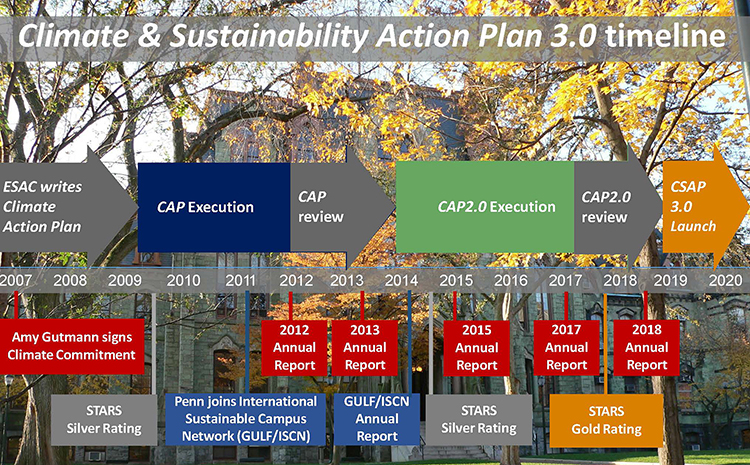 Amy Gutmann: This is a wonderful opportunity for me to thank the whole University community for our progress on our sustainability efforts. Last week, we announced the next phase of Penn’s comprehensive sustainability efforts—our Climate and Sustainability Action Plan 3.0—which parallels our Penn Connects 3.0, and it turns out that our entire University is mobilized. We’ve made significant progress to date, and we’ll make even greater progress still to confront the existential threat of climate change and meet critical sustainability issues of our time. We have taken a pledge that we call 100x42 carbon pledge, which is to get 100% carbon neutral by 2042, which is a full eight years before the IPCC, the Intergovernmental Panel for Climate Change, has said we really must as a society and world become carbon neutral. The timing for this couldn’t be better for today’s presentation from Executive Vice President Craig Carnaroli and Vice President Anne Papageorge. They will discuss our efforts to go even further to combat climate change and to promote maximum sustainability at Penn. I do look at everybody here as an important part of the representation of our campus because we are at heart a teaching and educational and research university, and a lot of our efforts, as you will hear, are both on what we do on our campus but also what we’re doing in research and teaching. Please join me in welcoming Craig Carnaroli and Anne Papageorge.
Amy Gutmann: This is a wonderful opportunity for me to thank the whole University community for our progress on our sustainability efforts. Last week, we announced the next phase of Penn’s comprehensive sustainability efforts—our Climate and Sustainability Action Plan 3.0—which parallels our Penn Connects 3.0, and it turns out that our entire University is mobilized. We’ve made significant progress to date, and we’ll make even greater progress still to confront the existential threat of climate change and meet critical sustainability issues of our time. We have taken a pledge that we call 100x42 carbon pledge, which is to get 100% carbon neutral by 2042, which is a full eight years before the IPCC, the Intergovernmental Panel for Climate Change, has said we really must as a society and world become carbon neutral. The timing for this couldn’t be better for today’s presentation from Executive Vice President Craig Carnaroli and Vice President Anne Papageorge. They will discuss our efforts to go even further to combat climate change and to promote maximum sustainability at Penn. I do look at everybody here as an important part of the representation of our campus because we are at heart a teaching and educational and research university, and a lot of our efforts, as you will hear, are both on what we do on our campus but also what we’re doing in research and teaching. Please join me in welcoming Craig Carnaroli and Anne Papageorge. 
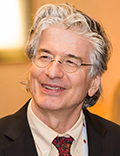 Charles S. Abrams is the Francis C. Wood Professor in Pathology and vice-chair for research and chief scientific officer in the department of medicine at PSOM. His research is focused on the contribution of phosphoinositide signaling on platelet activation, platelet disorders and megakaryopoiesis. He is also an active hematologist and specializes in the care of patients with platelet disorders and hemostatic and thrombotic disorders such immune thrombocytopenia and patients with venous thromboembolism. His research uses molecular and cellular biologic techniques to examine blood cell biology and involve biochemistry, expression mutagenesis, single cell microinjection, genetic library screening and murine homologous gene targeting. Dr. Abrams is the director and founder of the Penn/CHOP Blood Center for Patient Care & Discovery, one of the few blood cell disorders centers in the United States designed to provide the full spectrum of research and clinical care for non-malignant hematologic blood cell disorders. He has also led an effort by the American Society of Hematology to develop a National Clinical Trials Network designed to facilitate interventional trials that will lead to more rapid FDA approval of drugs designed to improve the quality of life for sickle cell patients and to increase the survival of individuals with this disorder.
Charles S. Abrams is the Francis C. Wood Professor in Pathology and vice-chair for research and chief scientific officer in the department of medicine at PSOM. His research is focused on the contribution of phosphoinositide signaling on platelet activation, platelet disorders and megakaryopoiesis. He is also an active hematologist and specializes in the care of patients with platelet disorders and hemostatic and thrombotic disorders such immune thrombocytopenia and patients with venous thromboembolism. His research uses molecular and cellular biologic techniques to examine blood cell biology and involve biochemistry, expression mutagenesis, single cell microinjection, genetic library screening and murine homologous gene targeting. Dr. Abrams is the director and founder of the Penn/CHOP Blood Center for Patient Care & Discovery, one of the few blood cell disorders centers in the United States designed to provide the full spectrum of research and clinical care for non-malignant hematologic blood cell disorders. He has also led an effort by the American Society of Hematology to develop a National Clinical Trials Network designed to facilitate interventional trials that will lead to more rapid FDA approval of drugs designed to improve the quality of life for sickle cell patients and to increase the survival of individuals with this disorder. Beverly L. Davidson is a professor of pathology and laboratory medicine at PSOM and director of the Raymond G. Perelman Center for Cellular and Molecular Therapeutics, the chief scientific strategy officer and the Arthur V. Meigs Chair in Pediatrics at CHOP. Her research focuses on understanding the molecular basis of neurodegeneration in inherited brain disorders, as well as working in the development of novel molecular medicines that can be applied to mitigate disease in affected patients. Dr. Davidson’s laboratory pioneered the design and application of gene-lowering technologies for the treatment of dominant disorders, such as Huntington’s disease and the spinocerebellar ataxias, using RNA interference approaches and more recently, gene editing technologies. Her group also devised novel approaches and vector systems to accomplish gene replacement for disorders affecting children with deficiencies in lysosomal enzymes important for brain development and function.
Beverly L. Davidson is a professor of pathology and laboratory medicine at PSOM and director of the Raymond G. Perelman Center for Cellular and Molecular Therapeutics, the chief scientific strategy officer and the Arthur V. Meigs Chair in Pediatrics at CHOP. Her research focuses on understanding the molecular basis of neurodegeneration in inherited brain disorders, as well as working in the development of novel molecular medicines that can be applied to mitigate disease in affected patients. Dr. Davidson’s laboratory pioneered the design and application of gene-lowering technologies for the treatment of dominant disorders, such as Huntington’s disease and the spinocerebellar ataxias, using RNA interference approaches and more recently, gene editing technologies. Her group also devised novel approaches and vector systems to accomplish gene replacement for disorders affecting children with deficiencies in lysosomal enzymes important for brain development and function.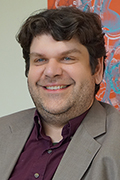 George Demiris is a Penn Integrates Knowledge University Professor with joint faculty appointments in the School of Nursing and in the department of biostatistics, epidemiology and informatics at PSOM. Dr. Demiris explores technology-based solutions for supporting patients and their families in various settings, including home and hospice care. He also focuses on designing and evaluating personal health systems that produce patient-generated data, including “smart home” solutions for aging and wearable devices.
George Demiris is a Penn Integrates Knowledge University Professor with joint faculty appointments in the School of Nursing and in the department of biostatistics, epidemiology and informatics at PSOM. Dr. Demiris explores technology-based solutions for supporting patients and their families in various settings, including home and hospice care. He also focuses on designing and evaluating personal health systems that produce patient-generated data, including “smart home” solutions for aging and wearable devices.  He is an inventor on over 170 patent applications and is an elected member of the National Academy of Inventors. He originated and has directed two long-running Cold Spring Harbor Summer Courses, Advanced Techniques in Neuroscience and Single Cell Analyses. Currently, he is a member of the NIH Multi-Council Working Group that oversees the US BRAIN Initiative and is co-chairing the Working Group that is writing the Neuroethics Roadmap for the BRAIN Initiative.
He is an inventor on over 170 patent applications and is an elected member of the National Academy of Inventors. He originated and has directed two long-running Cold Spring Harbor Summer Courses, Advanced Techniques in Neuroscience and Single Cell Analyses. Currently, he is a member of the NIH Multi-Council Working Group that oversees the US BRAIN Initiative and is co-chairing the Working Group that is writing the Neuroethics Roadmap for the BRAIN Initiative.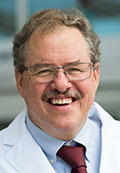 Dr. Grupp’s lab did many of the preclinical studies and developed the first pediatric trial and treated the first pediatric patient with CAR T cell therapy in 2012 (
Dr. Grupp’s lab did many of the preclinical studies and developed the first pediatric trial and treated the first pediatric patient with CAR T cell therapy in 2012 ( She is a member of Society for Neuroscience and fellow of the American College of Neuropsychopharmacology.
She is a member of Society for Neuroscience and fellow of the American College of Neuropsychopharmacology._Yale_10-11-16-resized.jpg) Yale E. Goldman, professor of physiology at PSOM, received the Biophysical Society’s 2020 Kazuhito Kinosita Award in Single Molecule Biophysics. He was recognized for his exceptional contributions to advancing the field of single molecule biophysics, specifically for his work in measuring and understanding the orientations, rotations and dynamics of motor proteins through the development and use of single-molecule imaging approaches. He will be presented with the award, which includes an honorarium and an invited lecture, at the annual Biophysical Society meeting in February in San Diego.
Yale E. Goldman, professor of physiology at PSOM, received the Biophysical Society’s 2020 Kazuhito Kinosita Award in Single Molecule Biophysics. He was recognized for his exceptional contributions to advancing the field of single molecule biophysics, specifically for his work in measuring and understanding the orientations, rotations and dynamics of motor proteins through the development and use of single-molecule imaging approaches. He will be presented with the award, which includes an honorarium and an invited lecture, at the annual Biophysical Society meeting in February in San Diego.


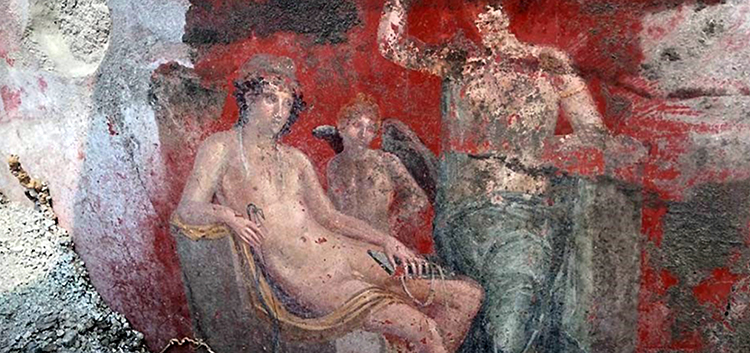 Throughout time, catastrophes have shaped the world we live in. In the 2019-2020 Great Lecture Series, Penn Museum explores catastrophes from their causes and immediate impacts, to their implications and ingenuities. Natural and nuclear disasters, along with disease and deluge, will all be explored—from Pompeii to Chernobyl and mass extinction to the flu pandemic. The lectures will be held 6-7 p.m. on the first Wednesday of the month through June.
Throughout time, catastrophes have shaped the world we live in. In the 2019-2020 Great Lecture Series, Penn Museum explores catastrophes from their causes and immediate impacts, to their implications and ingenuities. Natural and nuclear disasters, along with disease and deluge, will all be explored—from Pompeii to Chernobyl and mass extinction to the flu pandemic. The lectures will be held 6-7 p.m. on the first Wednesday of the month through June. 